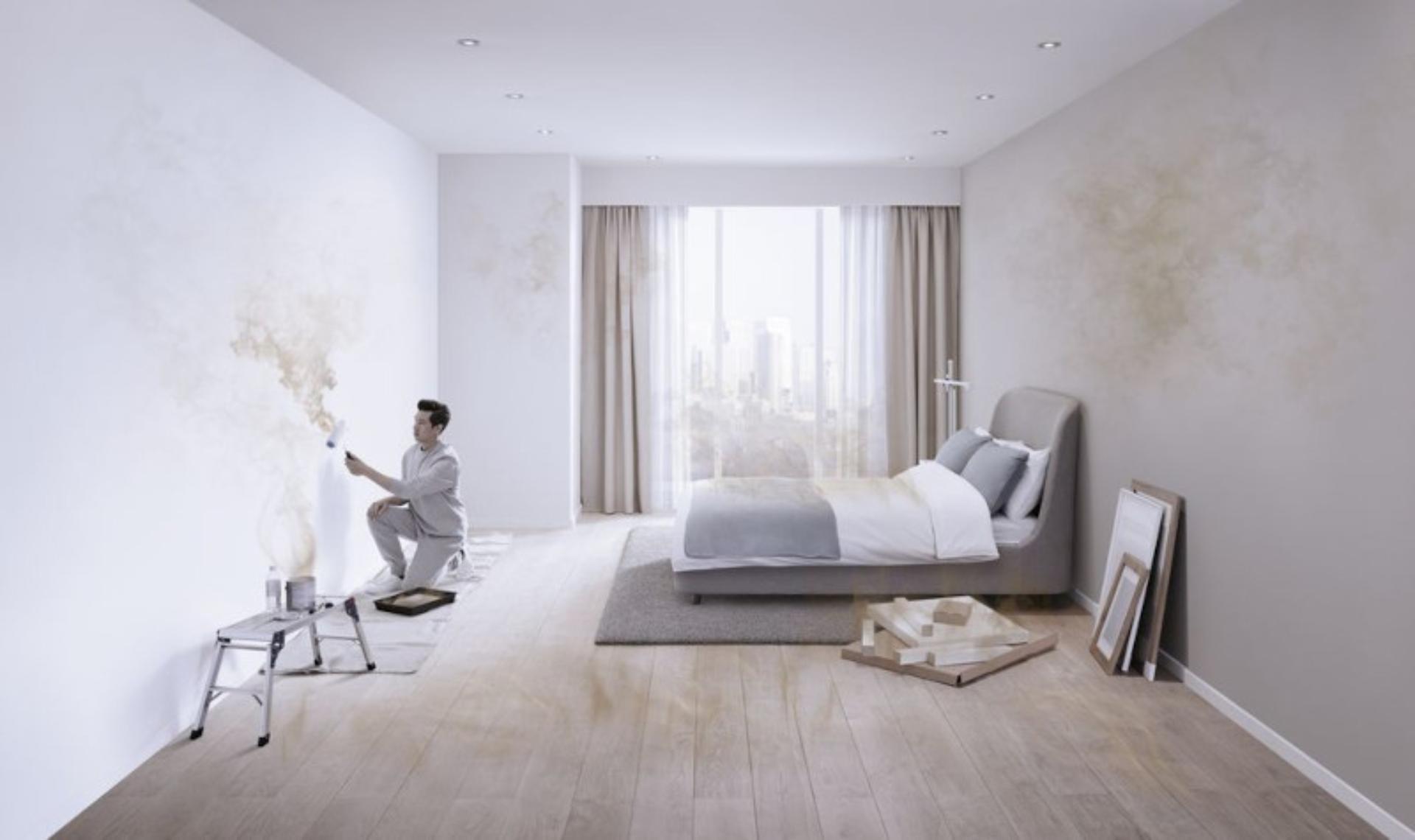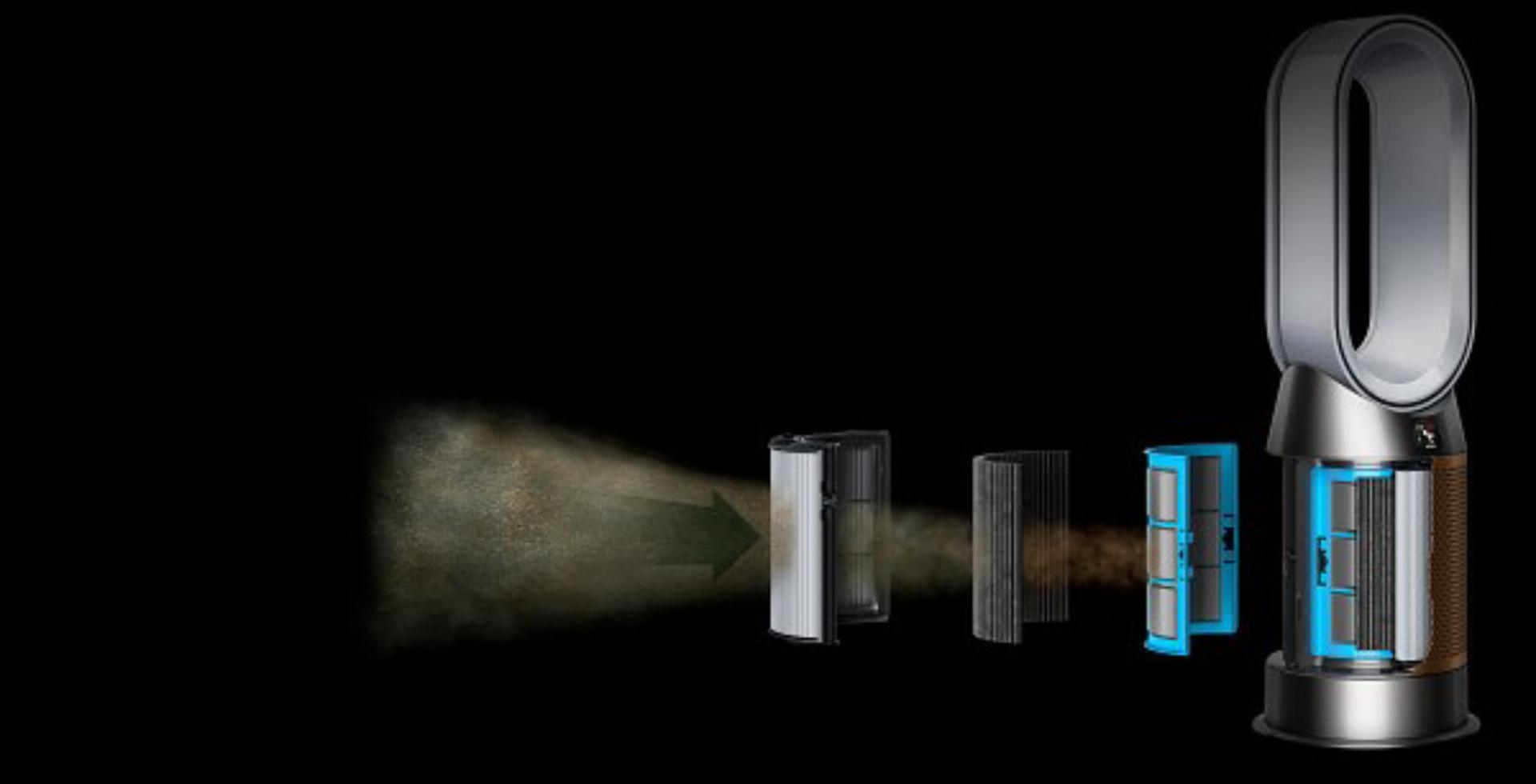What is formaldehyde? How to remove the invisible pollutant
Formaldehyde is present in virtually every home and office - but few are aware of the pollutant or how it affects air quality. Found in common materials, formaldehyde is invisible (though it can be detected through the familiar smells of fresh paint or when unboxing new furniture).
Unlike odours which eventually disappear, formaldehyde can continuously 'off-gas' - meaning that the airborne release of this chemical can continue to be present in homes for a number of years.
So, what is formaldehyde? And what is formalin? To break down the pollutant and its effects on home health, we walk through Dyson's research into indoor pollution. Discover how to remove formaldehyde with Dyson's range of air purifier technology below.
-
What is formaldehyde?

-
Formaldehyde is a colourless gas that is found in and released by common household and building objects, like furniture and products. ‘Formalin’ is what occurs once formaldehyde is dissolved in water. Given its guaranteed presence in indoor spaces, what is formaldehyde found in? The pollutant is used in materials like:
- Plywood
- Fibreglass
- Insulating materials
- Paint
- Wallpaper
- Household cleaning products
- Varnishes
Formaldehyde is widely used as a compound building block in the production of these materials and items. Because it’s a resin, it can be used in composite wood panels that would otherwise be discarded.
What does formaldehyde do?
Formaldehyde levels are present in every space but can be particularly high in recently renovated homes. What makes the chemical so tricky to capture is its size. Formaldehyde is 500 times smaller than 0.1 microns – for context, the human eye can detect dust and dirt from about 25 microns upwards. If left, formaldehyde can off-gas within the home for up to 15 years1.
What does formaldehyde do to the body?
Research bodies like the World Health Organisation have undertaken studies and reported on the impacts of formaldehyde. At low levels, formaldehyde in furniture and materials can cause itchy, sore or burning sensations in the throat2. When the use of formaldehyde and exposure across the home is high, the toxicity effects can result in symptoms such as coughing, wheezing, chest pains and bronchitis2.
A 2002 Australian study conducted by Dingle and Franklin on Perth homes found an average formaldehyde concentration of between 2.5 and 133.7 ug/m3. Because of this, it’s integral to home health to know how to remove formaldehyde.
How to remove formaldehyde from the home
Although its presence is invisible, you can capture or remove formaldehyde in the air via a few methods. The good news is that once the pollutant is eliminated, the off-gassing process stops, preventing formaldehyde from continuously affecting air quality.
As new materials can reintroduce the gas to indoor spaces, consider which products to purchase. When redecorating or renovating the home, opt for paints and wood finishes that don’t contain formaldehyde. Other formaldehyde removal tips are below.
Ventilate regularly
Formaldehyde levels are likely to be highest in well-sealed homes. Regular ventilation can help to expel VOC’s (volatile organic compounds) like benzene, ethylene glycol and formaldehyde, which are all present in homes. To reduce exposure to pollutants, open windows and doors periodically. In summer, we recommend ventilating the home in the evening, to promote cooler air in the home.
Ventilation doesn’t come without its limitations, however. Dyson’s study into air science reveals the range of pollutants in the home, including those that come from outside. Vehicle exhaust fumes, pollen, gardening products and pesticides can travel inside via ventilation and affect the air quality of homes and office spaces. To combat this, limit ventilation to instances of high pollutants (like after cooking), and utilise air purifier technology alongside it.
-
The latest Dyson air purifier is able to safely capture and convert formaldehyde, removing it from indoor spaces and stopping the off-gassing process. A pioneering achievement in air purification, the has whole-machine filtration that contains three separate filter systems – so what goes inside, stays inside. The filtercaptures odour, bacteria, pollen, allergens as well as formaldehyde, the HEPA+Carbon filter captures particles as small as 0.1 microns4. To deal with the much smaller formaldehyde, Dyson developed a unique catalytic filter containing billions of tunnels. This filter is able to trap formaldehyde and actually convert it into water and CO2 destroying the pollutant5.
Though it was once undetectable, formaldehyde can now be sensed and reported via the LCD screen and the MyDyson App. Other competitor formaldehyde sensors are gel-based, which can affect their precision. The sensor in Dyson’s machine is solid, allowing it to last the lifetime of the machine. Alongside this, the algorithm is intelligent enough to differentiate between VOCs, to provide a precise count of formaldehyde.
Discover the Dyson Purifier Hot+Cool™ Formaldehyde.
-

 Call us
Call us Email us
Email us Request a meeting
Request a meeting Live chat
Live chat